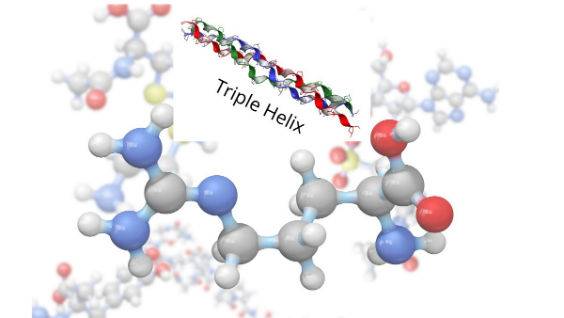As meticulous as I have been about ensuring that my micronutrient supplement regimen is what my body needs for healthy metabolism, so have I been skeptical about health claims made for the vast variety of other products offered to us consumers.
I was especially dubious about the effectiveness of ingesting collagen powders and pills since collagen is a protein and must be broken down to its constituent amino-acids and peptides before being absorbed. I do love my bone broth as a collagen source, as slow cooking at a low heat denatures the collagen in the bones, tendons and muscles.
However other consumers obviously had no such doubts about ingesting collagen, as the market for collagen products increased 6-fold in 6 years from $50 million in 2014 to $293 million in 2020. Wow.
So what’s the deal about collagen? I dug out my old biochemistry books and got side-tracked into plant and animal proteins, and essential amino-acids.
Here’s a recap from the DNA post. We have around 20,000 plus genes, each of which codes for a protein, that may be structural, like collagen, elastin, or an enzyme, or a transport protein. Proteins are made of amino-acids. There are basically 21 amino-acids, of which 9 are essential because we lack the synthetic capability to make them. Foods like meat or eggs are considered complete proteins because they have all 9 essential amino acids. Plant proteins are incomplete lacking one or more essential amino acids mainly lysine or tryptophan. That’s why most plant protein powders must contain a mix of plant sources. BTW collagen lacks tryptophan, a key essential amino-acid.
Collagen is the most abundant structural protein in our bodies, making up almost a third. There are many different types of collagen but Type 1 is the most common, being > 90% of our total collagen. Collagen is found in bones, cartilage, tendons, skin, muscles, and in the cornea and blood vessels. It’s everywhere. So I wondered how ingesting collagen would repair wrinkles.
Collagen gets hydrolysed, broken down, into amino-acids or peptides containing only 2 or 3 amino acids. Some of these peptides stimulates fibroblasts to make collagen. But I still haven’t figured out how they can specifically increase collagen in the skin or strengthen the matrix of our bones.
I would want to be assured of the quality of any collagen products that I ingested. What was the source? Were the ingredients screened for toxins and other impurities? The herbal and other supplement market is like the Wild West, and it’s really hard to know that what you think you are getting is really there, and that there are no contaminants; unless you have a trusted and trustworthy source.
Until I have access to a collagen product that I trust, I’m going to enjoy my bone broth, and hope that as well as satisfying my flavour buds, it will complement my micronutrients and strengthen my bones and nourish my skin.
